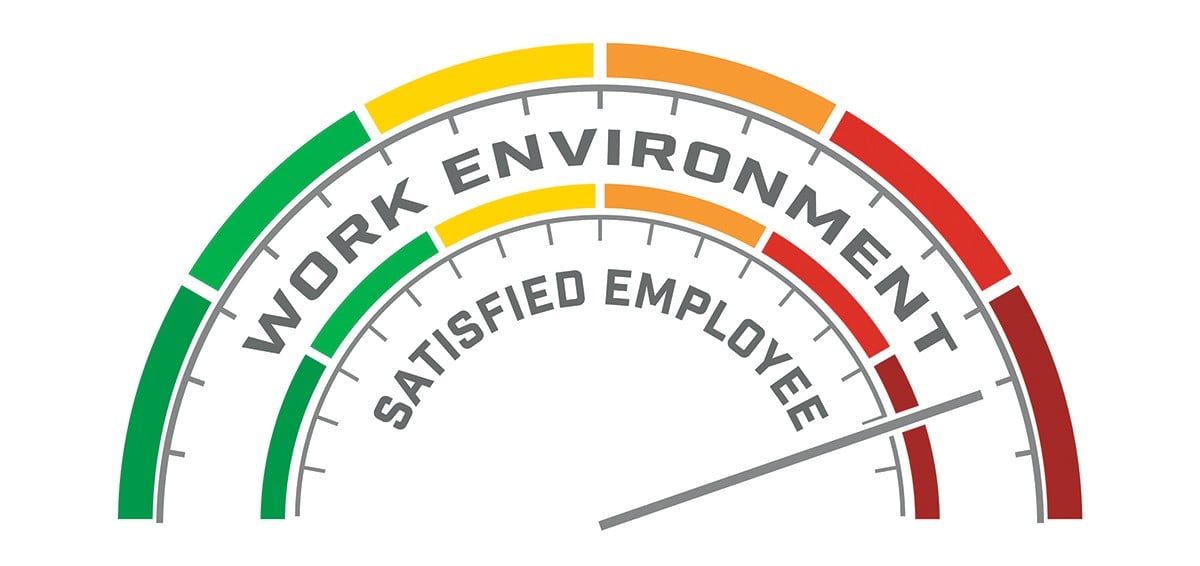
Wendy Lewis investigates how to navigate the shortage of qualified employees while maintaining the customer experience
According to McKinsey1, ‘People keep quitting at record levels, yet companies are still trying to attract and retain them the same old ways. People are switching jobs and industries, moving from traditional to non-traditional roles, retiring early, or starting their own businesses. They are taking a time-out to tend to their personal lives or embarking on sabbaticals.’
It’s not just you; it’s everyone! The workforce has been steadily shrinking post-pandemic, as mental health issues appear to be expanding at a record rate. While many companies, large and small, have made a significant effort to create a more positive workplace, the occasional yoga class and summer Friday off just aren’t quite cutting it.
Today, many businesses of all sizes are scratching their heads to figure out what kinds of wellness benefits and team-building exercises they can implement to hang on to their best staff and prevent a mass exit to their competitors.
Take a quick look on LinkedIn under Jobs in your market. On 28 August 2022, I did a deep dive to see how many job openings were posted under: ‘Medical Practice’.
Here is what popped up; 131,424 in the U.S. alone. Under ‘Aesthetician’ positions, we found 40,072, and ‘Nurse Injectors’ came in at 281,416. Even if we consider that many businesses and headhunters list these jobs in multiple categories to have the greatest reach, which accounts for many duplicates, that is a high number of openings.
The Great Resignation
Since the pandemic, we have been hearing about employees leaving their jobs or opting to work part-time in record numbers. Some may be eyeing early retirement, while others are leaving for a better work environment, more perks, and fewer hours. The best talent has become increasingly harder to recruit, keep on board, and considerably more expensive. They may also present new demands that can seem to be unreasonable until you do the math.
On a positive note, this may be the opportunity you have been waiting for to clean house to attract and retain higher quality staff who have more to offer your business. In the current market, top talent hold all the power. Not surprisingly, this has compelled many practices to make fundamental changes in terms of salaries, benefits, flexibility, and hours. As the lines between work and home have been blurred over the past few years, employees some of their values and cares for the people who help it thrive.
The relationship between employer and employee is being challenged. Staffers are not just looking for an occasional pat on the back in the form of a Starbucks gift card, free lunch, or ‘Employee of the Month’ plaque. Moreover, they are looking for fundamental changes in the way businesses are run and how they are treated.
These changes need to be intentional, meaningful, and long-term or even permanent.
In some cases, the issues may be less tangible than just money and time off. Younger demographics are often seeking a noticeable change in the culture of the organisation they work for. They want to be valued and treated as a ‘team member’ with a vested interest in the success of the business. Having happy staffers can permeate an atmosphere of kindness and caring, a higher level of customer service, and lower turnover rates. It is your responsibility as an owner or manager of your business to make sure your staff are supported and given the resources you need to accomplish your job.
Clearly, these changes are more feasible to implement in a small business model vs. a Fortune 500 company. You may find that just starting with small steps can make a profound difference to employees. The best way to find out what they really want is to have real conversations with staff and colleagues to foster a greater sense of community.
According to Ted Lain, MD, MBA, FAAD, Chief Medical Officer of Sanova Dermatology in Austin, Texas, ‘The Great Resignation, coupled with a rapidly evolving period of inflation, has led to dramatic staff turnover. Offices are challenged to keep even their most seasoned employees, the ones we value to most, because of their domain knowledge and strong patient connections. While it seems that staff leave for even a minimal hourly increase, the real reason may lie in office culture and leadership. The turnover burdens remaining staff with a greater workload, causing a spiralling effect on morale and, possibly, work product.’

10 SIMPLE AND AFFORDABLE WAYS TO KEEP STAFF HAPPY
- Pay above-average salaries and include attainable incentives
- Allow employees to share and speak their minds without penalties
- Always show appreciation and respect (i.e., say ‘Thank You’ often)
- Don’t micromanage your best staff — empower them!
- Identify and invest in your high performers
- Offer your most ambitious staff a way to learn and grow
- Provide flexibility wherever and whenever possible
- Host frequent team bonding experiences: dinners, lunches, sports, picnics, conferences, etc.
- Maintain an open-door policy to foster communication
- Review your pay structure and find creative ways to be competitive on salaries and perks
We have found that staff appreciation events and comments, work rewards, and celebrations of even small achievements or milestones have helped to reduce reliance on wages for staff retention as well as to improve the workplace attitude. An unexpected benefit is the effect on our ability to hire new employees; current staff communicate our commitment to their well-being and development, which entices their networks to want to work for us,’ he says.
Just say no to burnout
According to New York City aesthetic plastic surgeon Mark H. Schwartz, ‘My practice is located on the upper east side of Manhattan where there is a plethora of clinics, private practices, and hospitals, so experienced physician extenders, as well as front desk managers, are in high demand. Staff turnover can be a challenge, especially since we have an accredited operating theatre on-site. One of our surgical techs, who was with us for 7 years, decided to move to Florida, and replacing her has proven to be difficult in the current environment.’
‘We have found that a lot of applicants no longer want to work full-time and are looking for a 3 or 4–day work week and to go home at 5 pm. In a busy aesthetic practice, that can be a dilemma. I want to hire the most efficient and talented staff I can find, but my practice needs to be open when patients want to come in. That usually means there will be some late office hours that need coverage,’ he says.
Building (and keeping) your dream team
Moving forward, it is clear that it takes more than just throwing a little extra cash at employees to keep them from straying. Of course, money helps, but it’s not the only perk that counts anymore. Stress relief and time off also rank high, as does recognition for a job well done.
I see this as partially a generational phenomenon. GenY and millennials are all about something called ‘work-life balance’. So, what exactly is work-life balance?
According to Business News Daily3, ‘In short, work-life balance is the state of equilibrium where a person equally prioritises the demands of one’s career and the demands of one’s personal life. Some of the common reasons that lead to a poor work-life balance include increased responsibilities at work, working longer hours, increased responsibilities at home, and having children.’
This definition may be left open to some interpretation. For example, your work-life balance expectations may be completely different than mine or that of your front desk staff or nurse injectors.
This may seem like an unattainable goal in the field of aesthetics because, as in all aspects of medicine, the doctor or someone from the medical team must be available when patients need them. However, applying the ‘work-life balance’ concept could translate to mean that ‘someone’ must be available, but it doesn’t necessarily have to be the person who is in the highest-ranking position. It also doesn’t need to be just one person all the time, which can rapidly take its toll on staff members.
For example, advances in technology have greatly helped simplify the way medical professionals take calls and handle patient queries. Giving your staff the tools and training they need to be efficient in the form of state-of-the-art workstations and software with tech support at the ready when they get stuck may get them excited about coming to work every day.
According to Yael Halaas, MD, a facial plastic surgeon in New York City and Chair of the AAFPRS Emerging Trends and Technology Committee, ‘We have definitely seen a huge change since the pandemic. It’s a delicate balance and a challenge between having employees work at home and bringing them back to the office where we must be able to see our patients and deliver quality care.’
To prevent staff burnout, Dr. Halaas has implemented some changes in the way she runs her practice. ‘We have added more flexible hours, ZOOM meetings, and allow some employees to work remotely whenever possible. We have carefully examined each position to shift responsibilities and change roles to make sure everyone in the office is maximising their skills and fulfilling their potential. This has helped to keep our staff happy and to foster a sense of fulfilment and work-life balance in our practice,’ she says.
In today’s competitive market, employees at every level are seeking a great culture and outstanding leadership. Taking care of ourselves has become more important across age groups, positions, and locations. Being mindful of these trends and acting on them can help lessen the degree of employee turnover in your business.
4 Top Tips for clinic owners and managers
- Calm down: We all go through symptoms of burnout sometimes, and it may just be because it’s Wednesday (aka Hump Day). Recognise that the way you talk to colleagues and staff can directly impact how they feel. You may not be privy to what is going on in their personal lives,
so be kind to the people around you and they may return the favour. - Get some perspective: If you’re stressed out (a lot), you’re probably not great at hiding it from your team. Be kind to yourself and chill. No one wants to work around someone who is volatile and could snap at any second. You don’t need to show your whole spectrum of emotions to the people who are there to help you do your job better. Prioritise your workload, delegate whatever you can at intervals, and try to stay sane.
- Take a break, please: Schedule mini breaks during the week to reset your attitude and improve productivity. Go on an app that delivers with lightning speed (DoorDash, UberEats, etc.), and surprise everyone with their favourite coffee drinks, gummy bears, or something with chocolate.
- Stay Positive: Focus on what you can control and don’t dwell in the minutia. Think happy thoughts, even if you’re on the brink of bursting into tears, at least in front of your team. If you’re uptight and nervous, chances are they are feeling it too. Negativity can spread like COVID.
Plastic surgeon Karen H. Horton, MD, MSc, FRCS, FRCSC in San Francisco, has been fortunate to maintain her long-time staff in her practice and surgical suite. ‘Finding talented and well-fitting team members is HARD. But keeping them should and can be easy. In my practice, we have had very little turnover in our key positions, including Registered Nurse/Patient Educator, Aesthetic Nurse Practitioner, Office Manager/Patient Coordinator, Front Office Manager, Surgery Center Manager, Scrub Technician/Sterile Processing and PACU Nurse. I believe the key to a successful private practice family is mutual respect. Asking for input and truly listening and implementing your team members’ ideas and concepts gives them emotional ownership in the practice,’ she says.
‘It is also important to allow your team to thrive and grow in their individual positions without micromanaging. Understanding that it takes a village to care for a patient, nurture and maintain the relationship, and provide the very best patient experience is equally essential. No one practitioner can truly do it all; we are all spokes in a wheel,’ says Dr. Horton.
Defining boundaries as a boss
Everyone has boundaries. Communicating them to yourself and co-workers is useful to strike a balance between work hours and personal time. Setting boundaries will look different for everyone. For some, who are not interfacing directly with patients, it might include turning their work notifications off after hours or taking their work email off personal devices. By laying out your expectations for everyone’s role, you may get the respect you deserve and can prioritise everyone’s workload better, including your own.
Small business owners across the globe are facing a labour shortage at a new level. There is a battle for talent out there that has made hiring much harder for small-business owners. While the current labour market poses a challenge for all employers, small businesses have less to offer and are not able to match the salary, perks and benefits of Fortune 500 companies. This makes it harder to offer extras like sign-on bonuses and incremental raises.
If an employee is down in the dumps and may be a flight risk, reach out and ask how they are feeling. If they respond by saying they are feeling burnt out, it’s key to stay ahead of it and open a line of communication. You may be able to prevent losing someone who adds good value to your business by intervening swiftly and coming up with a mutually satisfactory solution. If the employee addresses their feelings directly to you, it is wise not to let them linger. Start a dialogue to try to come up with a solution that you can live with and may mitigate the employee’s pain points. It may be worth more to keep someone in your practice, even if it comes with a steep price tag.
Review your pay structure and consider new ways to be competitive on salaries, bonuses, perks, time off, and team bonding experiences. Look into creative ways to compensate your superstars that resonate with them individually. I have come across some practices and medspa owners who have adopted an equity model to maintain their most vital performers.
Consider how hard it is to hire and train someone new right now. You may need to run ads on Indeed or LinkedIn, hire a headhunter, and then there is the onboarding process for acclimating someone new. You may also have difficulties finding someone quickly to fill the role or end up paying a higher salary if the position remains open for too long. Lastly, there is the added challenge of introducing a new person to your other staff and patients and the nail-biting that accompanies that process.

Finding the right people
It is important for a healthy aesthetics practice to have people on board who can do the things that the practitioners either aren’t trained for or don’t want to do. Getting the right people on board can make or break your practice. You want to be surrounded by people who love coming to work every day and are committed. Search for individuals who will be interacting with clients and patients who are natural-born ‘people pleasers.’ Make it a hard and fast rule that before you hire anyone for the practice, have at least one more person do an interview to make sure you are on the same page.
According to Kim Campbell, Founder of Dermatology Authority in New Jersey, the most significant challenge practices are having is staffing up. ‘Hiring and keeping the current staff on board is the hardest part of practice management right now,’ she says and offers three tips for making it work.
1. Create a system for employee feedback
Your interest and ability to receive feedback significantly affects whether your employees feel invested in the practice. Communicate that you are always willing to hear good and bad feedback. Your employees know your practice best and may see problems and potential solutions before you do. This proactive step shows positive signs to employees that you value them and hold them in high regard. These check-in conversations can help with retention and prevent reactive situations by showing that you value them, which can help keep them in your practice.
2. Recognise your employees
Let your employees know when you see them going above and beyond. You can reward them with gift cards, paid time off, or even just kudos. Hearing about a job well done can be a huge morale boost. Encourage employee development and recognise development as it occurs. Best ways to applaud reaching a milestone may include completing educational programmes, mastering new software, mentoring, and meeting production goals.
3. Create opportunities for employees to grow
Employees are either growing or stagnating. A stagnating worker will likely become underperforming or leave. Consider how you can help each staff member grow and support them in that process, including providing additional training or help with further education. Consider ways to promote your employees or provide them with different responsibilities. You may be able to unburden yourself by trusting others with more responsibility.
Times are changing
Times have certainly done a 360, and most of us are still in the process of getting accustomed to the new world order. The pandemic created new challenges and hurdles for aesthetic practices and medspas all over the map. Everyone was forced to transition in ways that suited their individual businesses. Yet, the elements that emerged most consistently are an increased recognition of the value of dedicated and reliable staff plus a new appreciation for loyal clients who stuck with you.
I am hopeful that this newfound reality check will remain at the forefront of running a successful aesthetics business for years to come.
References
- De Smet A, Dowling B, Hancock B, Schaninger B. The Great Attrition is making hiring harder. Are you searching the right talent pools? McKinsey Quarterly; July 13, 2022. Available at: https://tinyurl.com/dkruknry [last accessed 19th September 2022]
- Brassey J, Coe E, Dewhurst M, Enomoto K, Giarola R, Herbig B, Jeffery B. Addressing employee burnout: Are you solving the right problem? McKinsey Health Institute, May 2022. Available at: https://tinyurl.com/7ymz27c3 [last accessed 19th September 2022]
- Sanfilippo M. How to Improve Your Work-Life Balance Today. Business News Daily, Aug 06, 2022. Available at: https://www.businessnewsdaily.com/5244-improve-work-life-balance-today.html [last accessed 19th September 2022]








